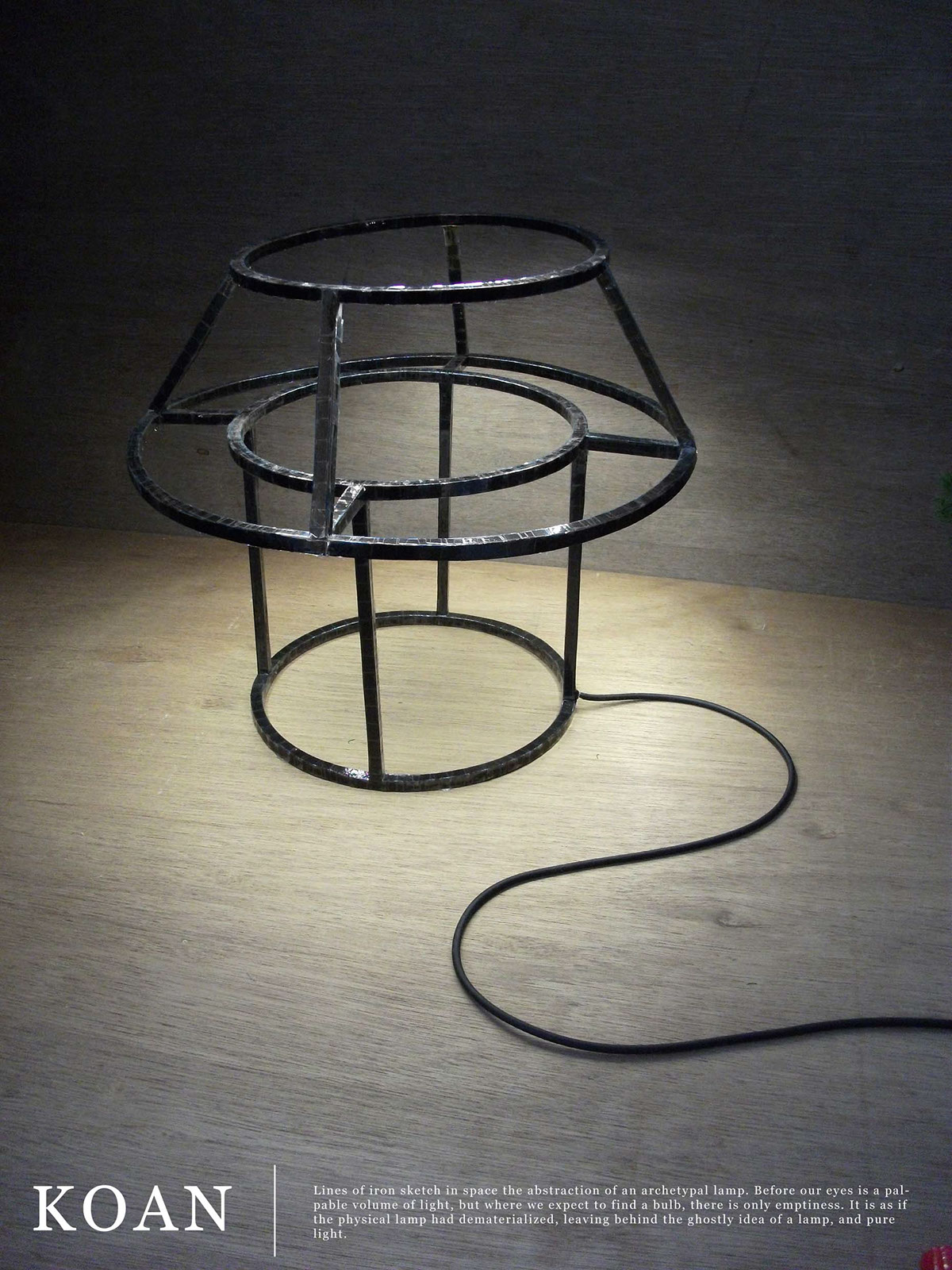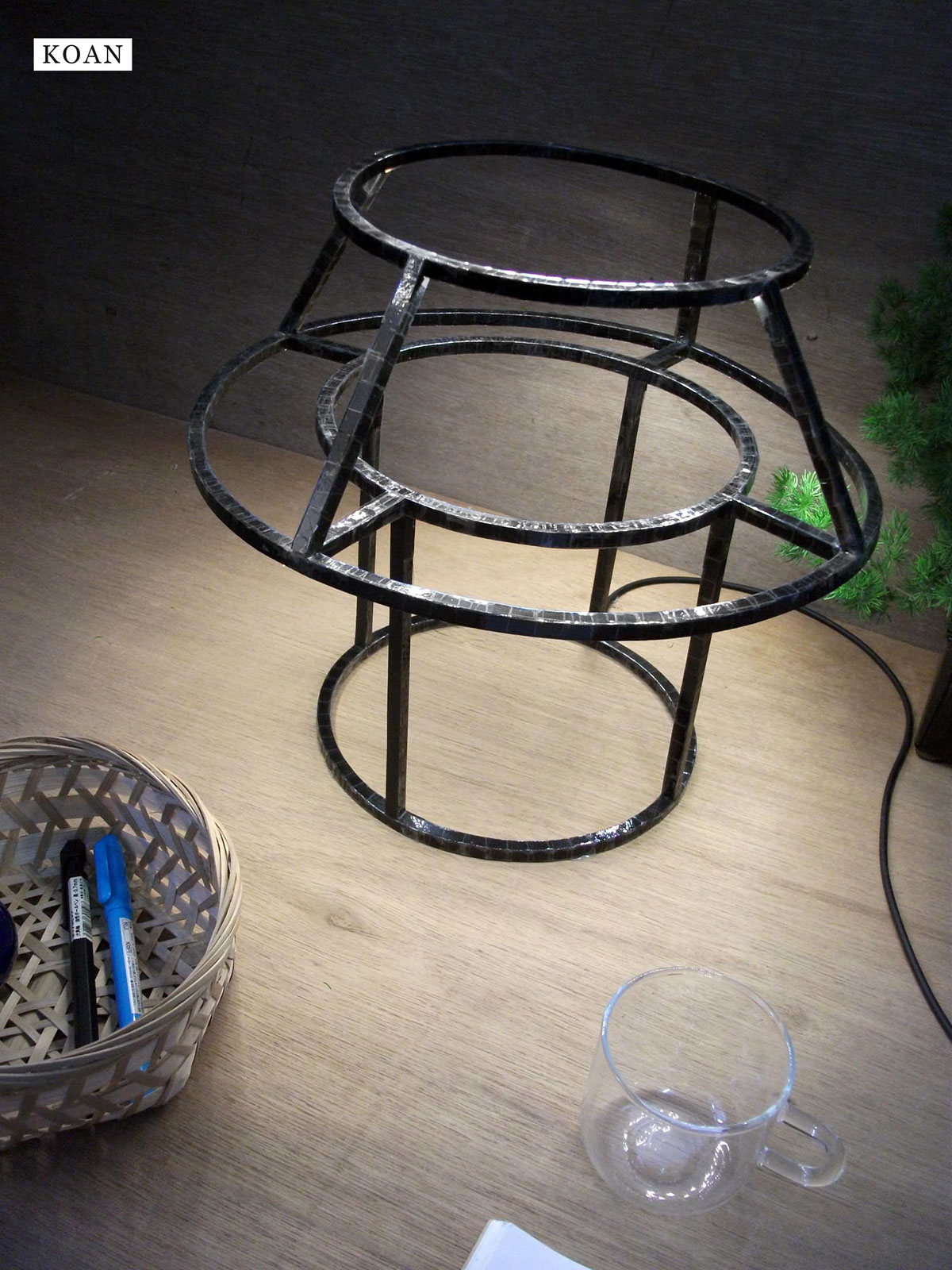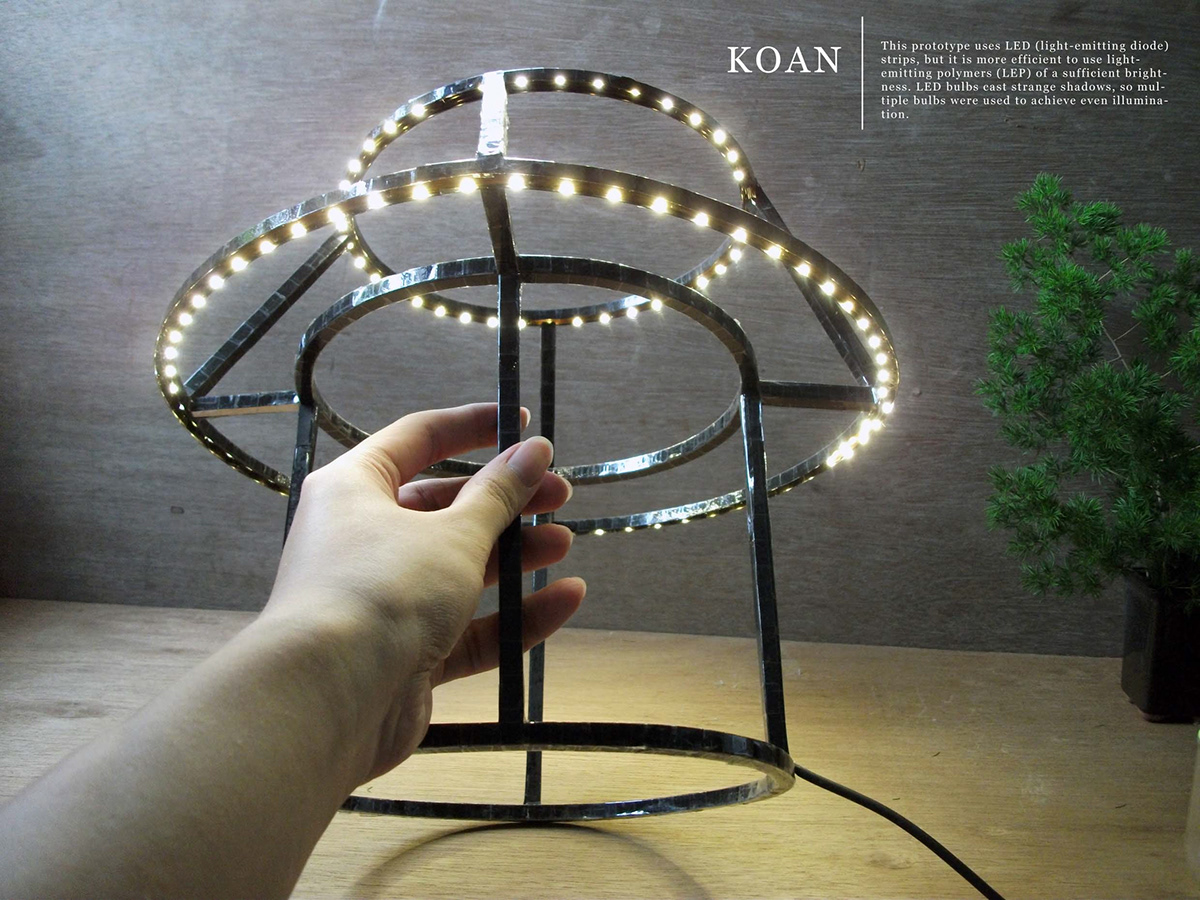'Koan' Light.
On Nothingness.
A ‘Koan’ is a paradoxical riddle used in Zen to provoke enlightenment, collected in texts such as the classic Mumonkan, or "The Gateless Gate". The ‘Koan’ lamp tries to exploit the poetic possibilities granted by the miniaturization of lighting technology, but to steer clear of obvious technical feats like making the ‘thinnest lamp in the world’.
Thin black lines sketch in space the abstraction of an archetypal lamp. A palpable volume of light confronts our senses, but where we expect to find an incandescent bulb, there is only emptiness. It is as if the bulb and physical lamp had dematerialized, leaving behind the ghostly representation of a lamp… and pure light. Like a magic trick, the design is more of a misdirection than a sculptural exercise, a means for generating a feeling of the uncanny by confounding our expectations of the physical world. The focus is no longer onthe lighting fixture, heightening our awareness of ‘light’ as a tangible substance. A lightless light.
Thin black lines sketch in space the abstraction of an archetypal lamp. A palpable volume of light confronts our senses, but where we expect to find an incandescent bulb, there is only emptiness. It is as if the bulb and physical lamp had dematerialized, leaving behind the ghostly representation of a lamp… and pure light. Like a magic trick, the design is more of a misdirection than a sculptural exercise, a means for generating a feeling of the uncanny by confounding our expectations of the physical world. The focus is no longer onthe lighting fixture, heightening our awareness of ‘light’ as a tangible substance. A lightless light.





I am intrigued by the works of Japanese designers like Junya Ishigami, e.g. Table (2005), ‘Paper chairs’ (2008) and ‘Cuboid Balloon’ (2007), which are more contemplative rather than expressive or imaginative. There is a spirituality in using the powerful realness of objects to pull us out from a design culture drunk and numb from escapist visual excess, to shock and awaken us back into reality.


In lighting design, it often feels like skirting the issue to focus on the fixture rather than ‘light’ itself, e.g. as an excuse for yet another sculptural exercise, or an exploration of weird, unconventional materials. Yet Light itself is already an unusual substance full of metaphysical significance. I set myself a riddle to solve. Can there be simply 'light', with no source?
For instance, in Junya Ishigami’s ‘Table’ (2005), an awareness of the principle behind its supernaturally thin construction is integral to the appreciation of the concept. If the secret were a triumph of material engineering, e.g. hi-tech carbon fibre, rather than spring steel pre-stressed in the opposing direction, the concept would lose its aura. Ishigami's intention was not to make the thinnest table in the world, but rather to heighten our sense of reality, by confronting our expectations of the physical universe with surreal objects that nevertheless exist (the steel was only 3mm thick but the table 9.5 metres long). Another example is Nendo’s steel rod reinforced ‘Cord chair’ (2009). Our fingers recognize the texture of carved wood, but our mind is perplexed by the counter-intuitive thinness of the chair. I feel this psychological approach to objects has the potential to be more powerful and deeply affecting than the conventional sculptural exercises or semantic references.
This project was completed in December 2009.
